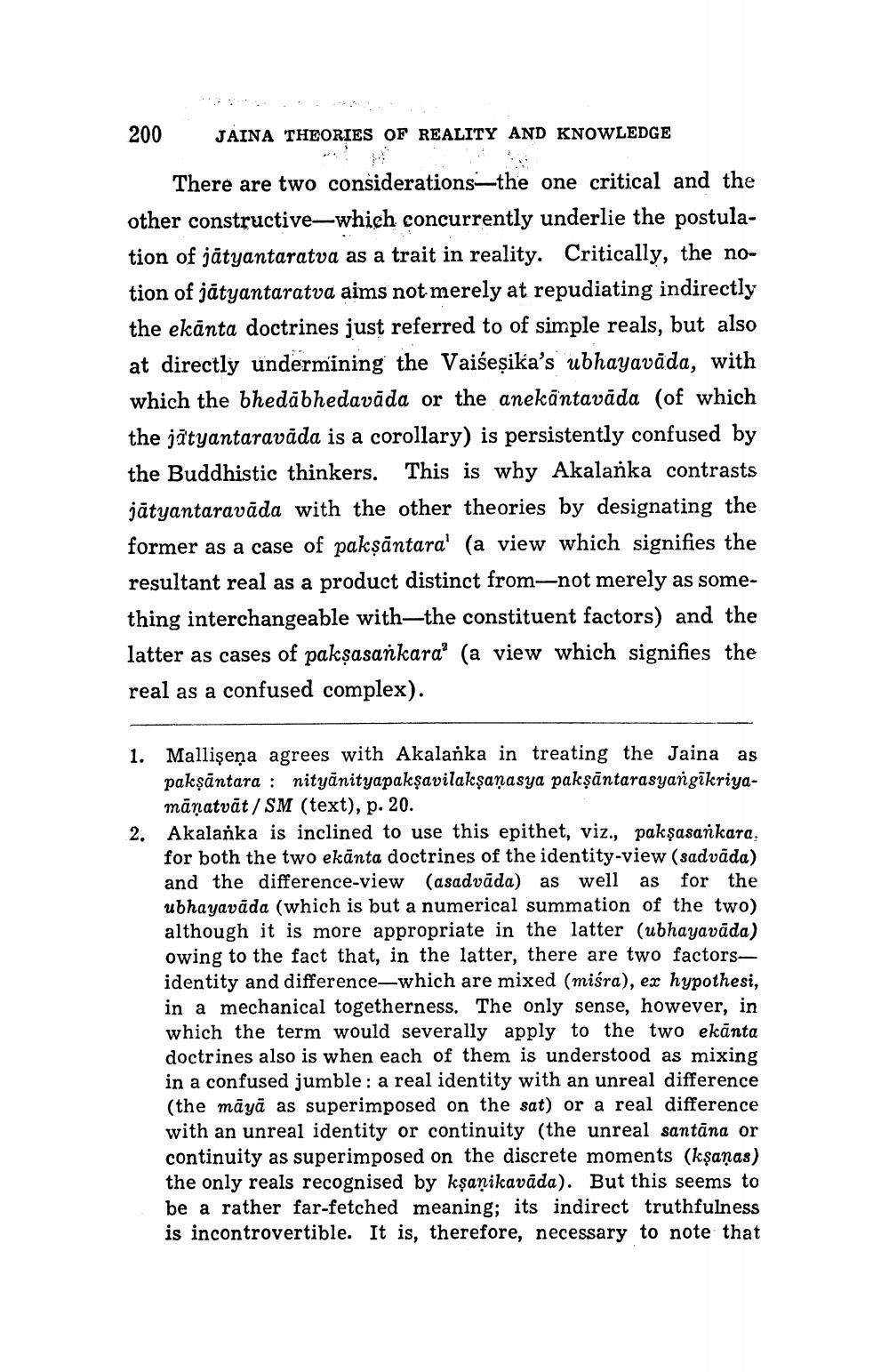________________
200 JAINA THEORIES OF REALITY AND KNOWLEDGE
There are two considerations—the one critical and the other constructive—which concurrently underlie the postulation of jātyantaratva as a trait in reality. Critically, the notion of jätyantaratva aims not merely at repudiating indirectly the ekānta doctrines just referred to of simple reals, but also at directly undermining the Vaiśeșika's ubhayavāda, with which the bhedābhedavāda or the anekāntavāda (of which the jātyantaravāda is a corollary) is persistently confused by the Buddhistic thinkers. This is why Akalanka contrasts jātyantaravāda with the other theories by designating the former as a case of pakşāntara' (a view which signifies the resultant real as a product distinct from—not merely as something interchangeable with—the constituent factors) and the latter as cases of pakşasankara' (a view which signifies the real as a confused complex).
2.
1. Mallisena agrees with Akalanka in treating the Jaina as
pakşāntara : nityānityapakşavilakṣaṇasya pakşāntarasyangīkriyamāṇatvāt/SM (text), p. 20. Akalanka is inclined to use this epithet, viz., pakşasankara. for both the two ekānta doctrines of the identity-view (sadvada) and the difference-view (asadvada) as well as for the ubhayavāda (which is but a numerical summation of the two) although it is more appropriate in the latter (ubhayavāda) owing to the fact that, in the latter, there are two factorsidentity and difference—which are mixed (miśra), ex hypothesi, in a mechanical togetherness. The only sense, however, in which the term would severally apply to the two ekānta doctrines also is when each of them is understood as mixing in a confused jumble: a real identity with an unreal difference (the māyā as superimposed on the sat) or a real difference with an unreal identity or continuity (the unreal santāna or continuity as superimposed on the discrete moments (kşaņas) the only reals recognised by kşaạikavāda). But this seems to be a rather far-fetched meaning; its indirect truthfulness is incontrovertible. It is, therefore, necessary to note that




